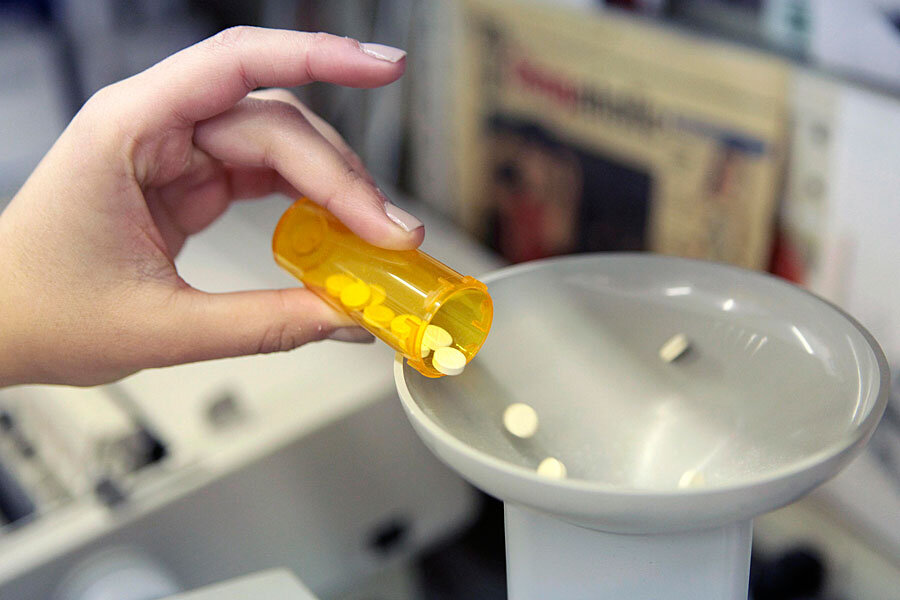How does a pill go from $13.50 to $750 overnight?
Loading...
Several years ago, the drug Daraprim sold at $1 for a tablet. Last month, Turing Pharmaceuticals of New York acquired the 62-year-old medicine, by then priced at $13.50 per pill, and raised its cost by 5,000 percent, to $750 per tablet.
Patient advocates and doctors alike are befuddled by this drastic increase. Daraprim is the standard prescribed treatment for diagnoses of toxoplasmosis, a common food-borne infection that can be life-threatening for those with weakened immune systems such as AIDS patients.
"This is a tremendous increase," said Judith Aberg, a spokesperson for the HIV Medicine Association, to USA Today. "Every week, I’m learning about another drug that has increased in price because of a change in marketing or the distributor."
Even patients with insurance will struggle to pay for the medication, she noted, as insurance companies often categorize high-price drugs as specialty items.
Federal rules will allow patients under Medicaid and some hospitals to attain the drug inexpensively, but private insurers, Medicare, and hospitalized patients will have to pay close to the $750 price tag for a pill.
Turing’s CEO, former hedge fund manager Martin Shkreli, shrugs off ethical critiques.
He says the price increase is justified by the fact that Daraprim is seldom used, and almost never for more than a year, so he's simply pricing it in line with other drugs for rare diseases, reports the New York Times. He says the profits – which will reach up to tens or even hundreds of millions of dollars a year if demand remains constant – will go to research and development on new toxoplasmosis medications with fewer side effects.
"The price per course of treatment to save your life was only $1,000 and we know these days, [with] modern pharmaceuticals, cancer drugs can cost $100,000 or more, rare disease drugs can cost half a million dollars," Mr. Shkreli tells Bloomberg. "Daraprim is still underpriced relative to its peers."
He’s correct that drugs prescribed for rare diseases are often extremely expensive. Cancer medications often cost more $100,000 a year, with some exceeding $150,000. Cycloserine, a tuberculosis medication, now costs $10,800 for 30 pills, a drastic increase from its previous $500 price tag. The antibiotic Doxycycline was $20 a bottle in October 2013, but by April 2014, it was $1,849.
A study by the Centers for Disease Control and Prevention estimates that toxoplasmosis affects up to 22.5 percent of Americans. The World Health Organization has included Daraprim, also known as pyrimethamine, on its List of Essential Medicines, a list of recommended drugs for a basic medical healthcare system.
As the public becomes more aware of the unfettered hikes in drug prices, lawmakers are turning up the pressure on pharmaceutical companies to be more transparent.
Last October, Sen. Bernie Sanders (I) of Vermont, who is currently seeking Democratic bid for president, joined with Rep. Elijah Cummings (D) of Maryland to investigate price increases. The Food and Drug Administration, on the other hand, has no control or authority over pharmaceutical pricing.
"It is unacceptable that Americans pay, by far, the highest prices in the world for prescription drugs," Senator Sanders said in a press release. "We've got to get to the bottom of these enormous price increases."
Pharmaceutical companies often cite the cost of research and development and insist that transparency disclosure requirements would be both costly to comply with and ineffective. Critics, however, suspect the high cost of drugs is due to a veiled – and unchecked – pursuit for profit.
John Rother, chief executive of the National Coalition on Health Care, told the Times that he hopes transparency legislation, in Congress or state legislatures, will solve the mystery of drug pricing.
"The industry has used R&D costs for the justification, but anyone who is reasonably sophisticated understands those are sunk costs and have little to do with pricing," said Mr. Rother. "The more important information is any calculation of value. If the drug actually cures people, then what costs in healthcare are you saving?"
As of July, drug cost transparency bills had been introduced in several states including California, Massachusetts, North Carolina, Oregon, and Pennsylvania.
In light of Daraprim's price jump, Senator Sanders' opponent Hillary Clinton tweeted her own outrage at the "price gouging" and promised a legislative solution.
Shortly after her note, biotech stocks began to plummet. The 144-member Nasdaq Biotechnology Index went down nearly 5 percent, with healthcare stocks being the worst performing category.
Her husband, former President Bill Clinton, addressed about 200 biotech and health-care executives in June and urged them to embrace transparency measures.
"Explain, explain, explain and disclose, disclose, disclose," advised Mr. Clinton, according to the Philadelphia Inquirer. "Don't expect everybody to love you, but at least they will hear your side of the story."





